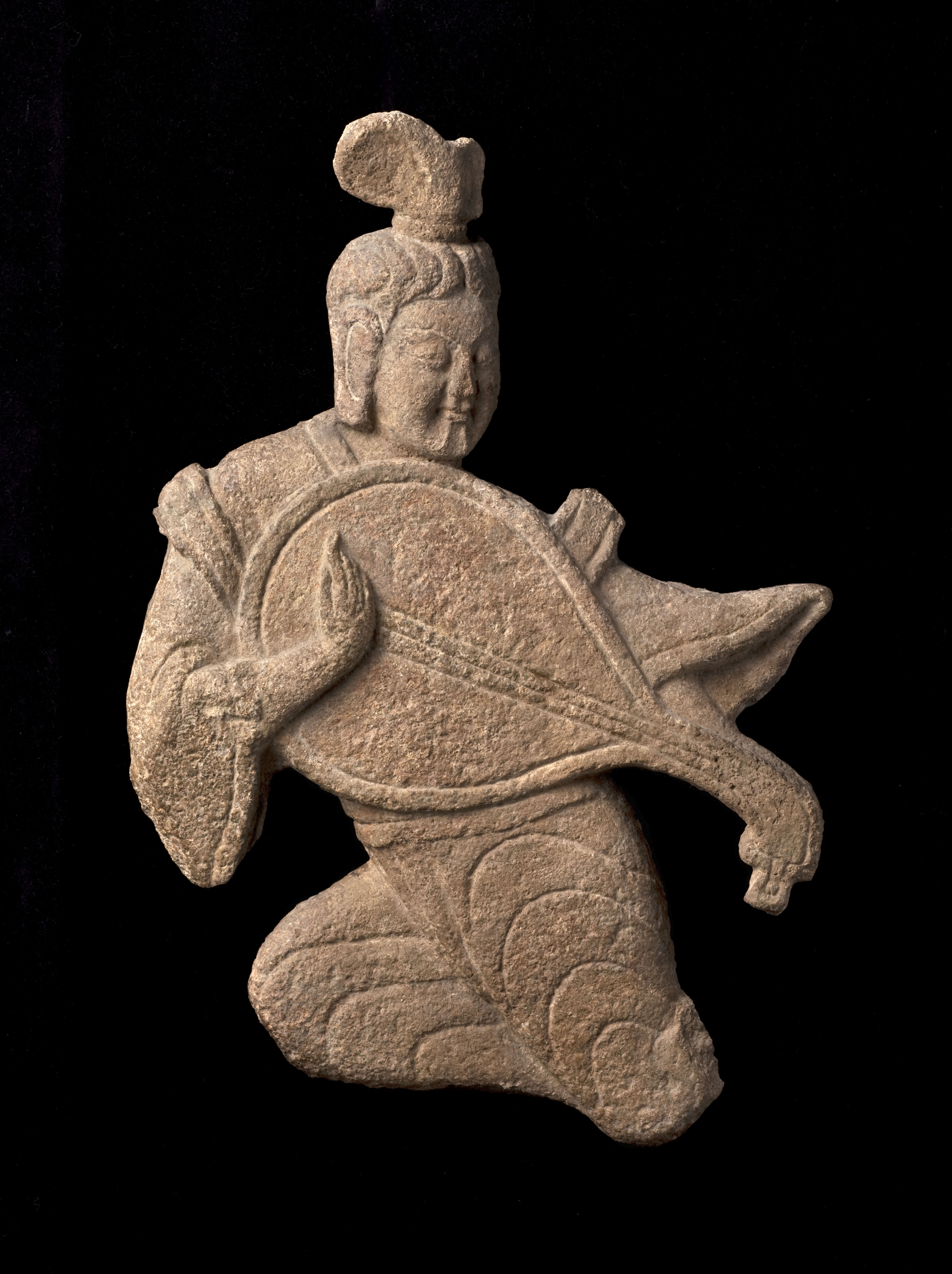
Musicien céleste
Pierre
Statue
Don manuel : Société des Amis du musée Cernuschi
M.C. 10013
Although its exact provenance is unknown, this work bears close comparison to sculptures in the Yungang grottoes (Shanxi), whose construction began in 460.
The relief was part of the groups of flying and musician divinities that sometimes decorated ceiling edges and arcatures over doorways, or niches housing statues of Buddhas and Bodhisattvas. These minor gods are common to Buddhiist and Hindu iconography. The Cernuschi Museum figure belongs to the group of gandharva, musicians in the service of Indra, king of the gods. They reside in a phantasmic, magical city named Gandharvanagara.
The Cernuschi Museum musician plays the pipa, a stringed instrument originating in Central Asia and adopted in China from ancient times. The Yungang grottoes, particularly Cave Nos. 6, 7, 8 and 16, contain numerous groups of musicians that are not unlike this figure.
Gilles Béguin, "Le Musicien Céleste du musée Cernuschi", La Revue du Louvre et des musées de France, 1999, n°5, p. 31-34
Gilles Béguin (dir.), Arts de l'Asie au musée Cernuschi, Paris , Paris Musées/Findakly, 2000, p.91-92, 204
Art chinois, Musée Cernuschi, acquisitions 1993-2004, Paris Musées/Editions Findakly, 2005, p.79-80-81
